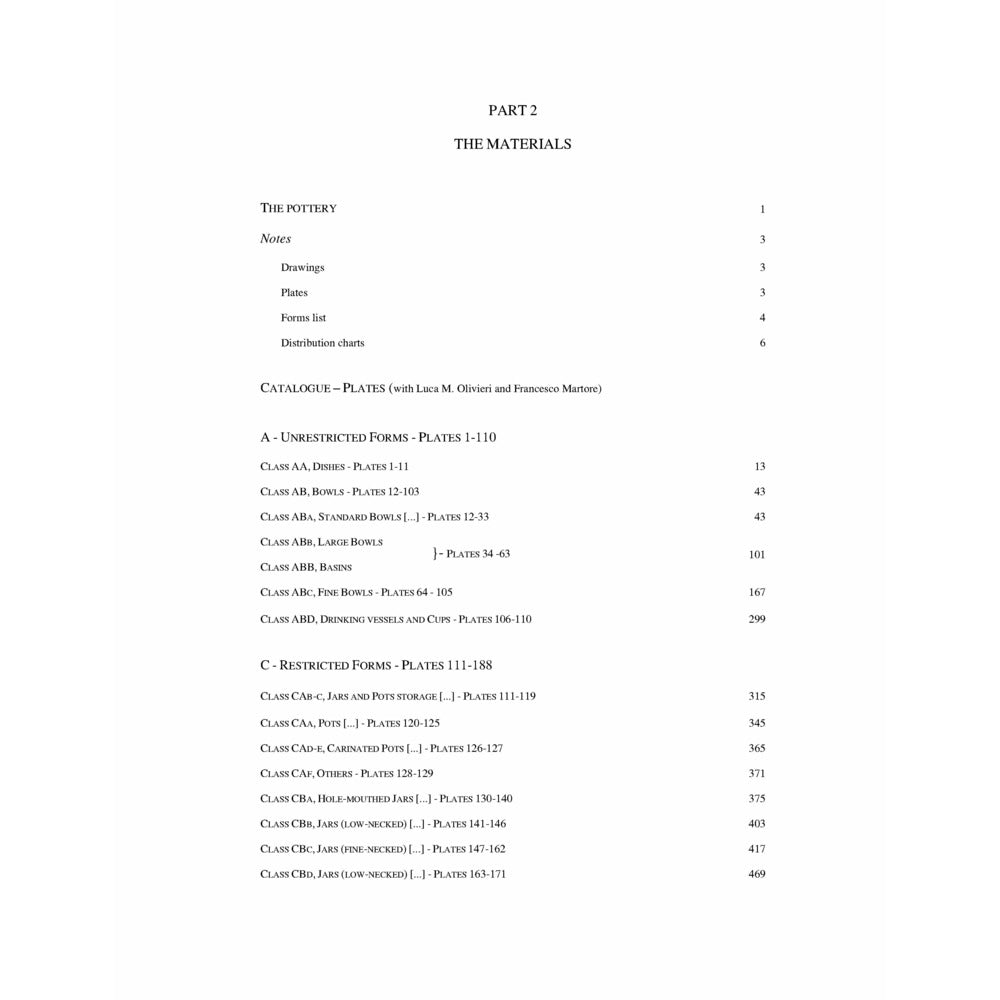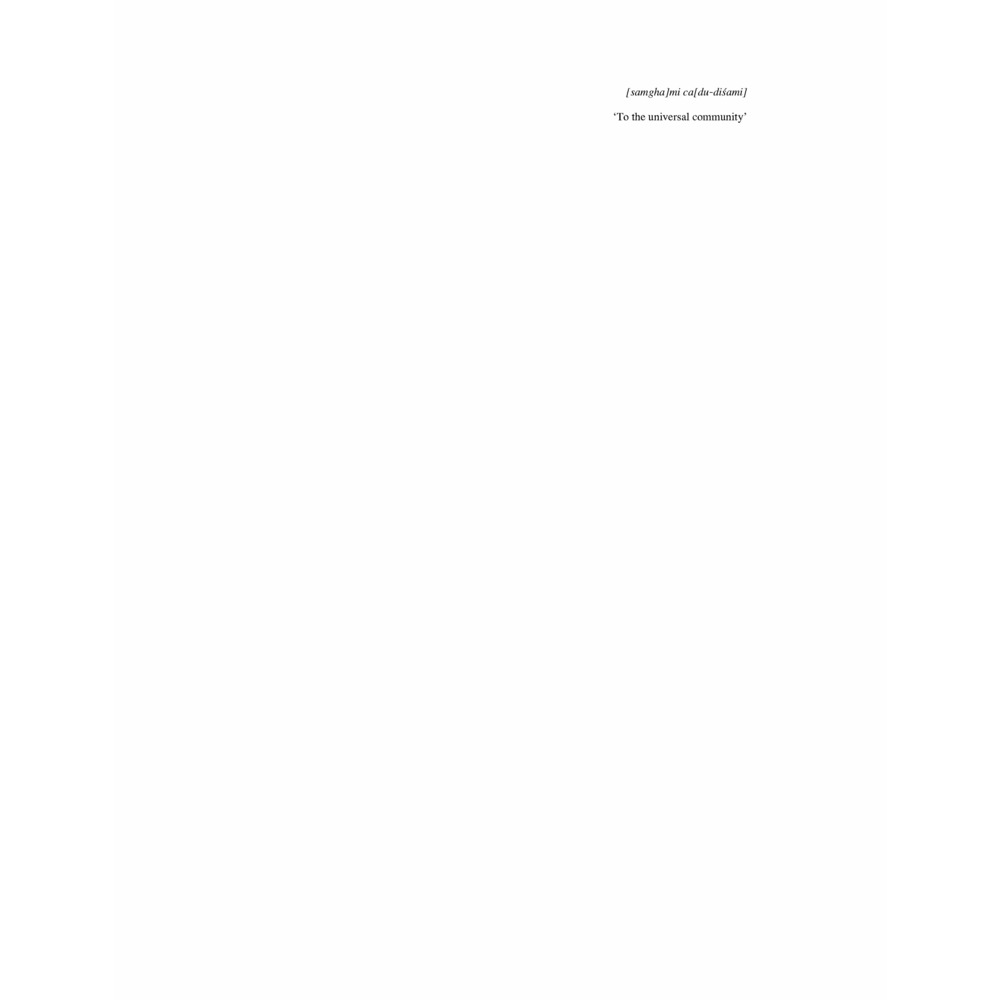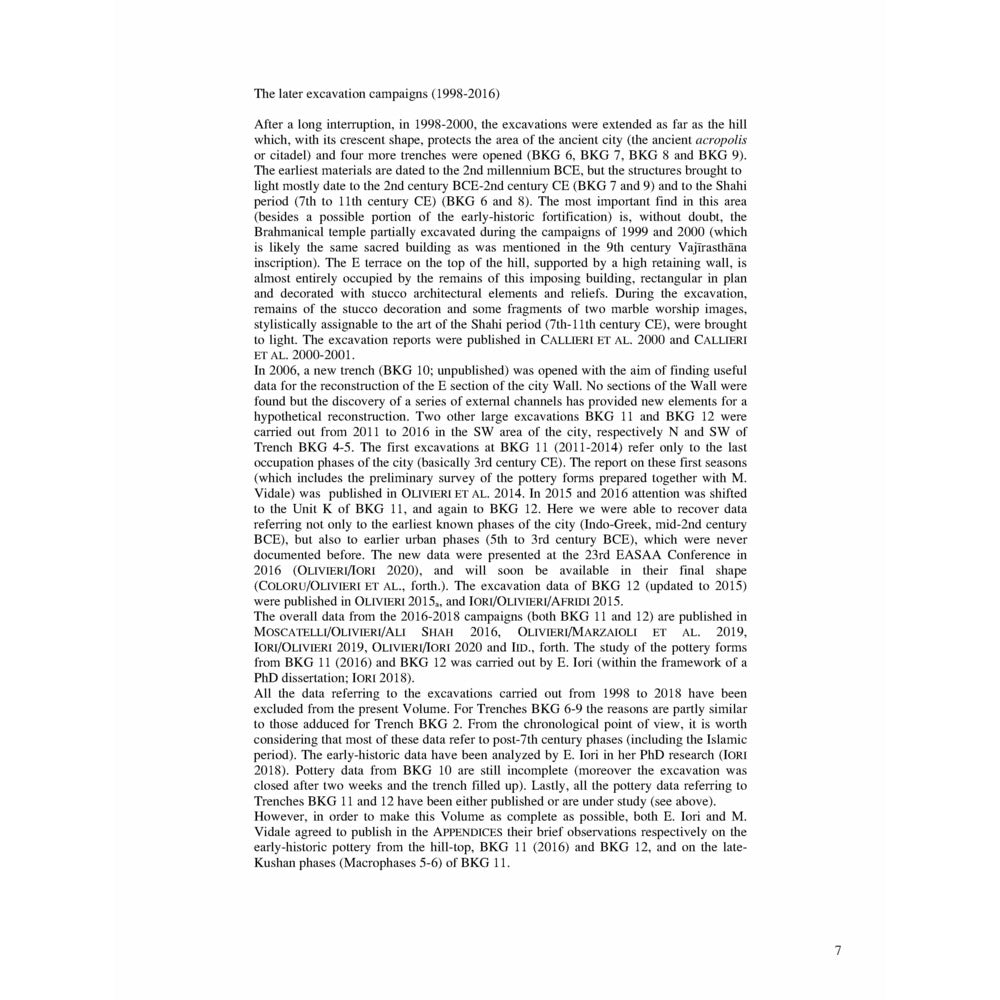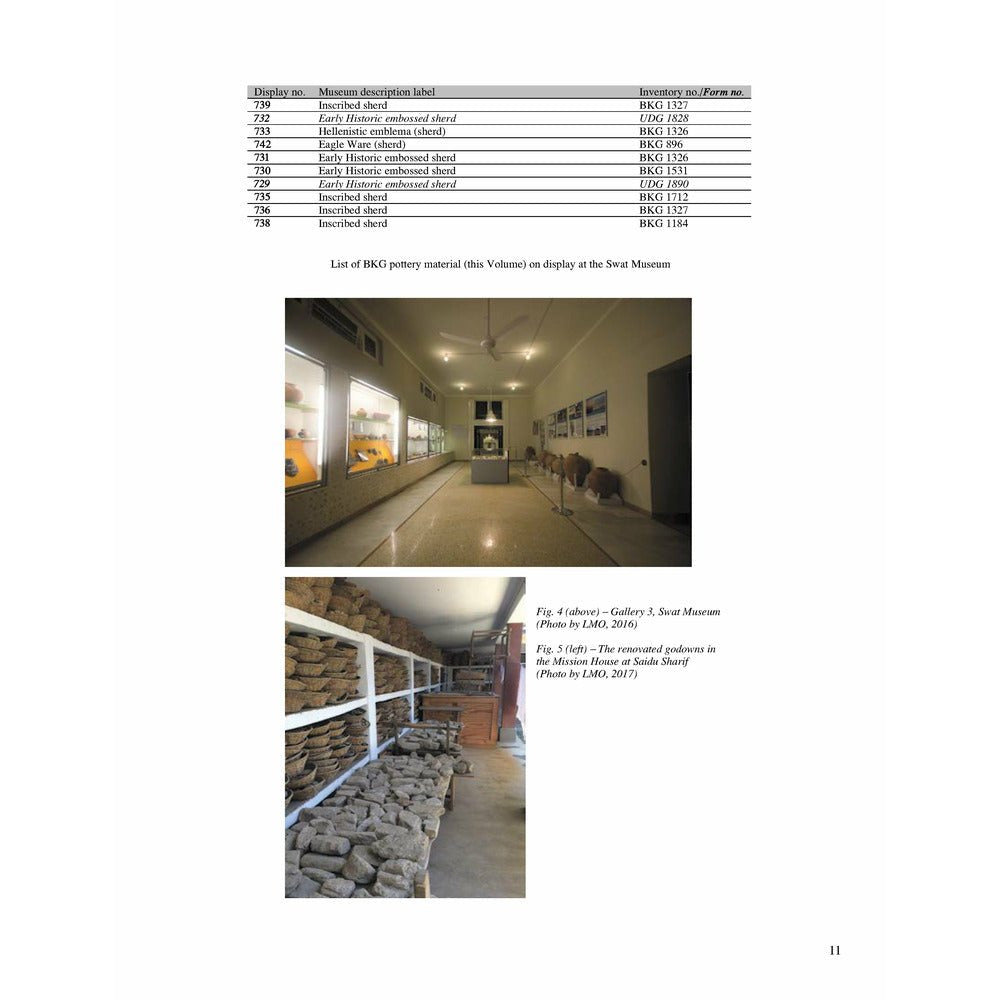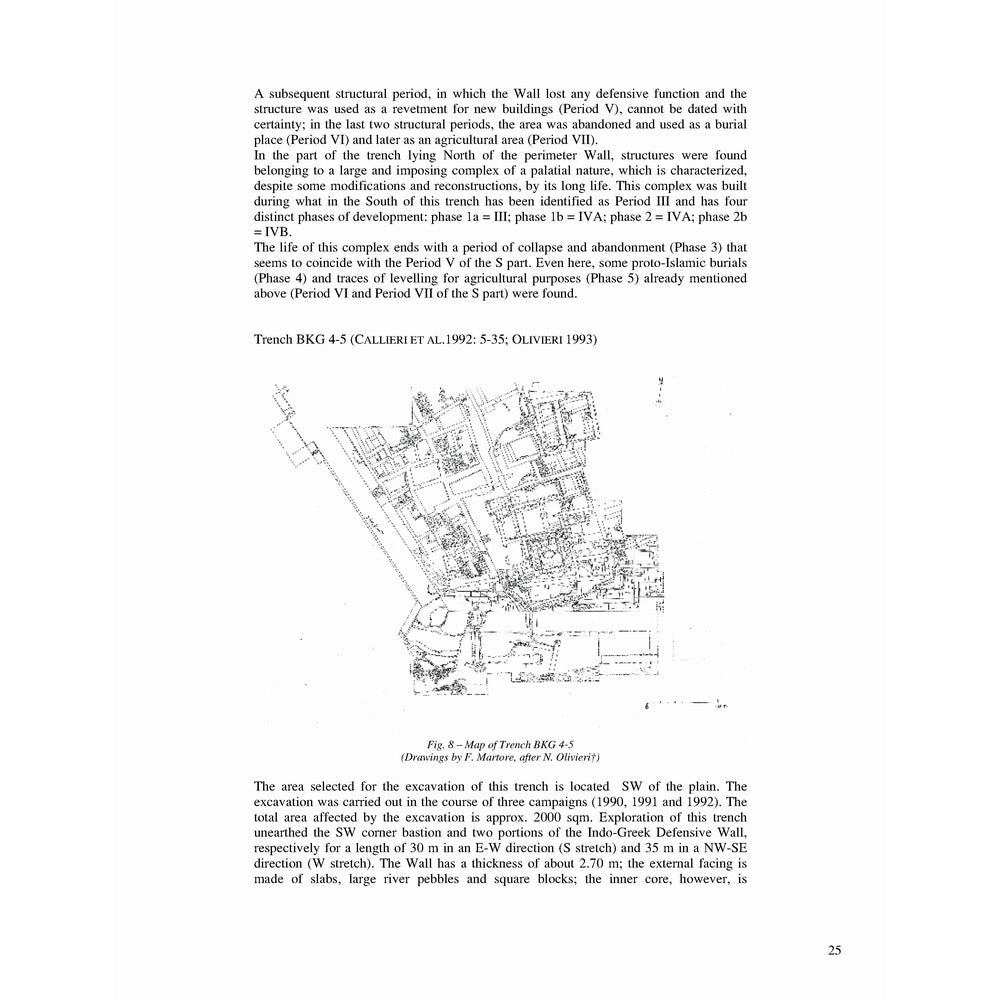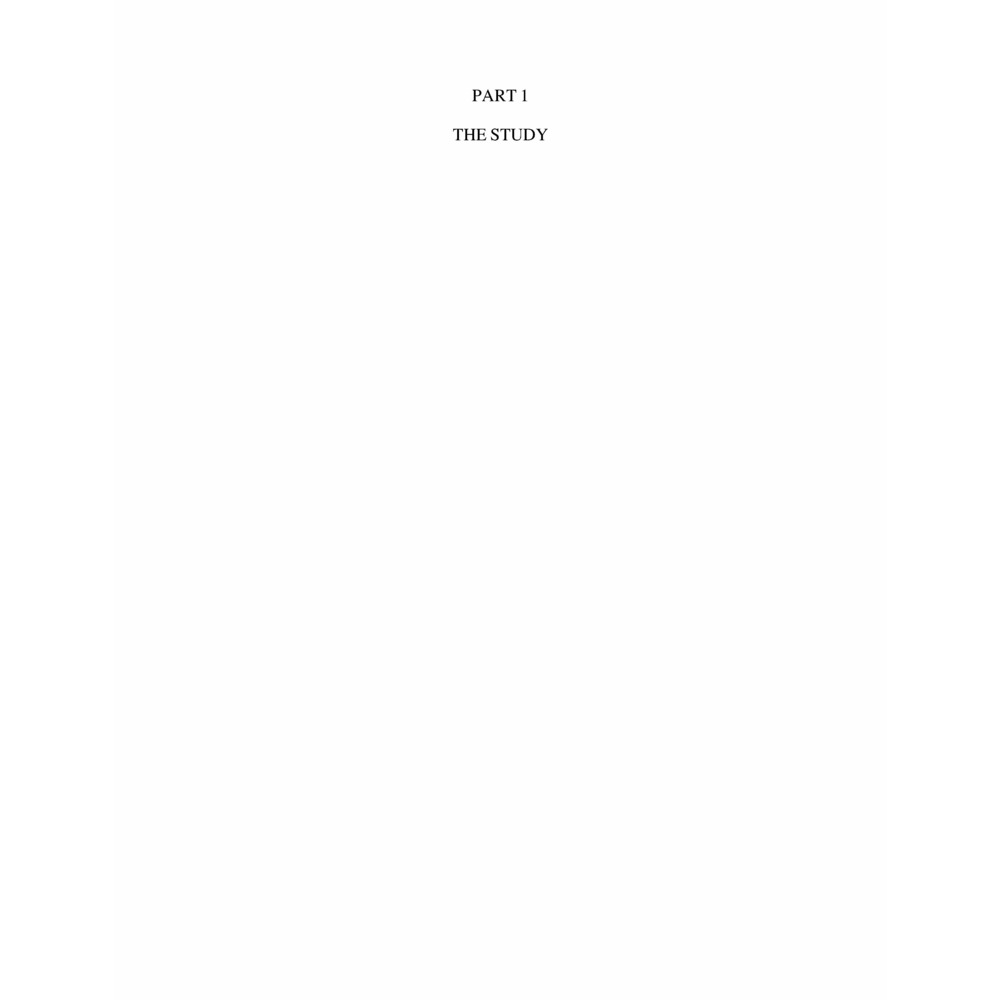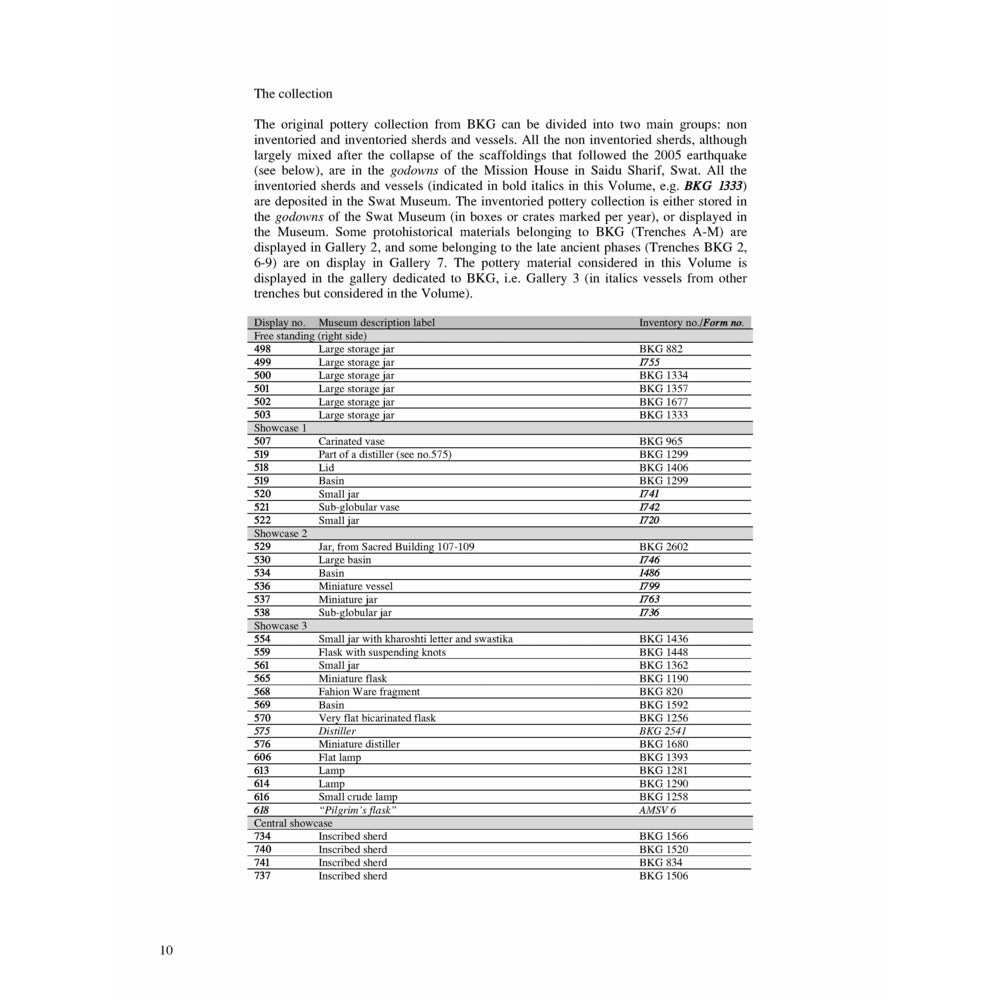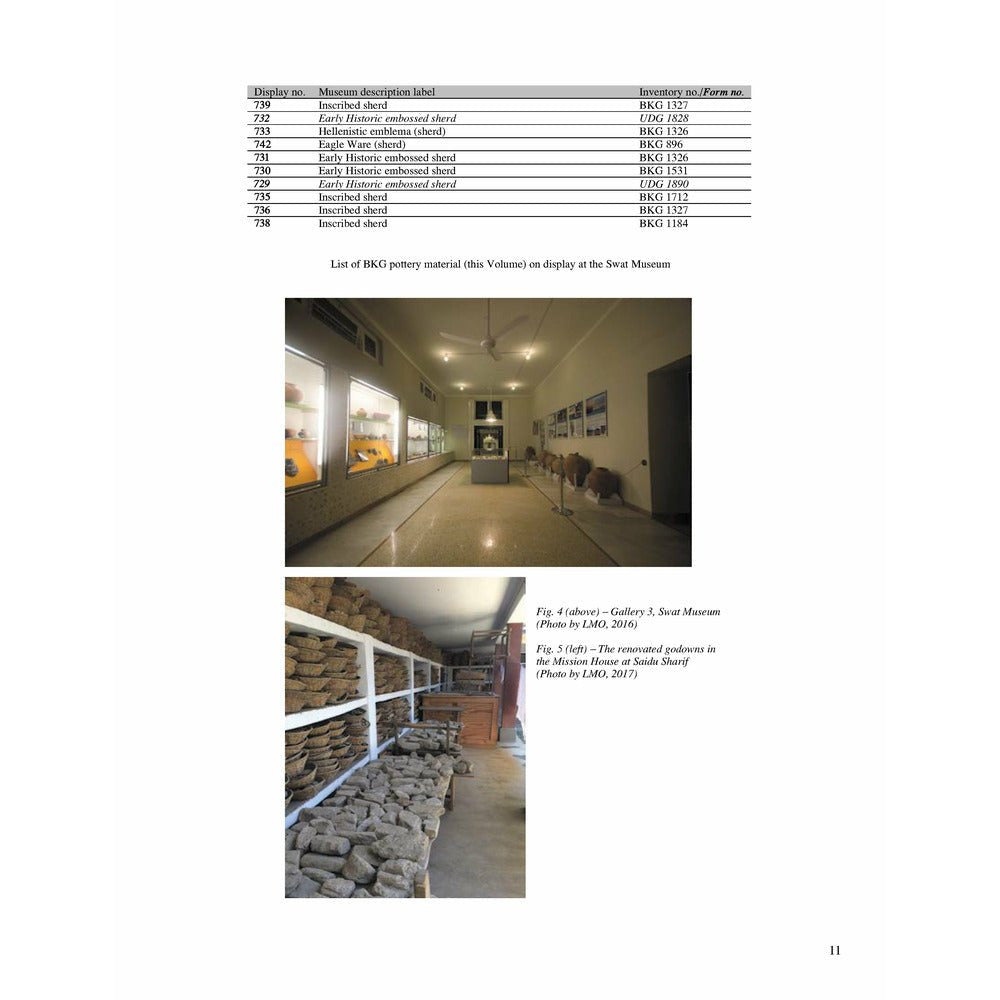1
/
of
42
Ceramics from the excavations In the historic settlement At Bīr-Koṭ-Ghwaṇḍai (barikot) Swat, Pakistan (1984-1992) - Pierfrancesco Callieri and Luca M. Olivieri
Ceramics from the excavations In the historic settlement At Bīr-Koṭ-Ghwaṇḍai (barikot) Swat, Pakistan (1984-1992) - Pierfrancesco Callieri and Luca M. Olivieri
No reviews
Regular price
Rs. 15,000.00
Regular price
Rs. 20,000.00
Sale price
Rs. 15,000.00
Unit price
/
per
Shipping calculated at checkout.
Couldn't load pickup availability
PRESENTATION
By Adriano V. Rossi
After the very important results obtained up until 1982 in Domenico Faccenna’s
largescale excavations in the Buddhist sanctuaries of Butkara I, Panr I and Saidu
Sharif I, and the excavation of the Bronze Age and Iron Age graveyards and
settlements, an important change of direction regarding methodology and
objective occurred when Pierfrancesco Callieri undertook the exploration of the
ancient urban site of Bīr-koṭ-ghwaṇḍai (Barikot).
Despite the important results obtained at Barikot, the IsMEO Italian excavations
still are, in the whole of Gandhara, amongst the few extensive diggings of an
Early Historic site to be carried out after the 1960s. Indirectly, this is a proof of
the “vitality” of a methodology which gives priority to the three-dimensional
information that only the excavation of an urban centre can provide, and which
IsMEO (now ISMEO) has always considered as the specificity of its
archaeological missions throughout in the world.
After 36 years of campaigns (not counting those by Giorgio Stacul in the 1970s),
Bīr-koṭ-ghwaṇḍai, the identification of which with the ancient town of Bazira-
Beira/Vajīrasthāna is now certain, can be considered, together with Sirkap, the
most crucial excavated settlement site in the North-West of the Indo-Pakistani
Subcontinent. We are pleased that this has happened not only for the work of two
of the Authors of this volume, two distinguished ISMEO scholars, but also
through an international collaboration that is outlined by the introductory words
of Cameron A. Petrie and further demonstrated by the many co-authors whose
names appear on the front page of this volume.
Although the site has been regularly published, for the pottery material we had to
wait more time than planned originally. In fact, the tragic earthquake that hit
northern Pakistan in 2005 had a dramatic effect on the pottery collections
conserved in the two godowns of the ISMEO Italian Mission at Saidu Sharif (see
below the Introduction to the volume). This circumstance would have only partly
affected the possibility of homogeneously integrating the descriptive data. As
matter of fact, the complete dataset had been brought to the Mission headquarters
at the IsIAO before the event occurred.
Unfortunately, though, following the dissolution of IsIAO by the Italian
Government authorities due to lack of funds (IsIAO was the Institute on which the
Italian Mission had depended from 1995 to 2012) the offices of the various
archaeological missions kept in Rome were vacated. The following numerous
changes of venue affected the archaeological deposits before a temporary place
was found in the storerooms of the Museo Nazionale di Arte Orientale ‘Giuseppe
Tucci’, now in the Museo delle Civiltà (EUR, Rome). Meanwhile a good
proportion of the pottery records were lost. The event had a particular effect on
the records of the inscribed sherds, as narrated in the introductory note of the
dedicated chapter.
The present volume adds to other published in the series ACT-Field School
Project Reports and Memoirs from the well-deserved publisher Sang-e-Meel
Publications, Lahore. The ceramic material from the most recent excavations
(2012-2014, Kushano-Sasanian phases) was published with Massimo Vidale in
viii
Volume II (2014): The Last Phases of the Urban Site of Bir-kot-ghwandai
(Barikot). The Buddhist Sites of Gumbat and Amluk-dara (Barikot).
The ceramic material of the excavations 2014-2017 (Indo-Greek and Saka-
Parthian phases), was studied together with the contemporary phases from the
excavations on the Acropolis of 1998-1999 by Elisa Iori in her doctoral thesis
(University of Bologna “Alma Mater”, 2018), and it is pretty much ready for final
publication in this same series (Special Volume 2.3: Ceramics from the
Excavations in the Historic Settlement at Bīr-koṭ-ghwaṇḍai (Barikot) Swat,
Pakistan (1998-2017). The Early-Historic Phases, to be printed in 2021).
All these important scientific and editorial results are due to the incessant activity
of the past and current Directors of the Italian Archaeological Mission in Swat,
the two Authors of this volume, who continue at the highest level the work of a
great master like Domenico Faccenna in a part of the world to which the names of
Italy and ISMEO are now inextricably linked.
What has been said so far brings to light how important has been the role of
scholars operating under the aegis of the IsMEO (1957-1995), then of IsIAO
(1995-2012), and finally of the reestablished ISMEO (2012-) in the
comprehensive analysis of the ceramics from the first phase of excavation at Bīrkoṭ-
ghwaṇḍai between 1984 and 1992.
Moreover, in the most recent period, starting in 2012, the assignment to the
Museo delle Civiltà of all materials of archaeological interest of the
IsMEO/IsIAO Missions created the conditions for a global scientific
reconsideration to which this study (and other similar ones) will certainly provide
significant contributions. This is the area of collaboration in view of which a
formal agreement has been signed between ISMEO, that I have the honour of
presiding over, and the Museo delle Civiltà, and also the reason why a specific
budget line of the five-year MIUR Project “Studies and research on the cultures of
Asia and Africa: tradition and continuity, revitalization and dissemination” is
devoted to the reordering of the IsIAO archives.
A final word on the close collaboration between IsMEO/IsIAO/ISMEO, Italy and
the political and cultural authorities of Pakistan and the Province of Khyber
Pakhtunkhwa. A paramount achievement was the acquisition, after a long
negotiation process, of one third (5 ha) of the archaeological site of Barikot at a
cost of 1 million Euro in December 2109. Without the constant support of all the
authorities in Pakistan nothing could have been done. I sincerely hope that
ISMEO, the authorities and the people of this important region will continue – on
the model of the work that is presented here – a collaboration designed to make
available to the international community the immense riches, material and
intangible, that the Italian research has been able to harvest over time.
Title: Ceramics from the excavations In the historic settlement At Bīr-Koṭ-Ghwaṇḍai (barikot) Swat, Pakistan (1984-1992)
Author: Pierfrancesco Callieri and Luca M. Olivieri
Subject:
ISBN: 9693533127
Language: English
Year of Publication:
Number of Pages:
By Adriano V. Rossi
After the very important results obtained up until 1982 in Domenico Faccenna’s
largescale excavations in the Buddhist sanctuaries of Butkara I, Panr I and Saidu
Sharif I, and the excavation of the Bronze Age and Iron Age graveyards and
settlements, an important change of direction regarding methodology and
objective occurred when Pierfrancesco Callieri undertook the exploration of the
ancient urban site of Bīr-koṭ-ghwaṇḍai (Barikot).
Despite the important results obtained at Barikot, the IsMEO Italian excavations
still are, in the whole of Gandhara, amongst the few extensive diggings of an
Early Historic site to be carried out after the 1960s. Indirectly, this is a proof of
the “vitality” of a methodology which gives priority to the three-dimensional
information that only the excavation of an urban centre can provide, and which
IsMEO (now ISMEO) has always considered as the specificity of its
archaeological missions throughout in the world.
After 36 years of campaigns (not counting those by Giorgio Stacul in the 1970s),
Bīr-koṭ-ghwaṇḍai, the identification of which with the ancient town of Bazira-
Beira/Vajīrasthāna is now certain, can be considered, together with Sirkap, the
most crucial excavated settlement site in the North-West of the Indo-Pakistani
Subcontinent. We are pleased that this has happened not only for the work of two
of the Authors of this volume, two distinguished ISMEO scholars, but also
through an international collaboration that is outlined by the introductory words
of Cameron A. Petrie and further demonstrated by the many co-authors whose
names appear on the front page of this volume.
Although the site has been regularly published, for the pottery material we had to
wait more time than planned originally. In fact, the tragic earthquake that hit
northern Pakistan in 2005 had a dramatic effect on the pottery collections
conserved in the two godowns of the ISMEO Italian Mission at Saidu Sharif (see
below the Introduction to the volume). This circumstance would have only partly
affected the possibility of homogeneously integrating the descriptive data. As
matter of fact, the complete dataset had been brought to the Mission headquarters
at the IsIAO before the event occurred.
Unfortunately, though, following the dissolution of IsIAO by the Italian
Government authorities due to lack of funds (IsIAO was the Institute on which the
Italian Mission had depended from 1995 to 2012) the offices of the various
archaeological missions kept in Rome were vacated. The following numerous
changes of venue affected the archaeological deposits before a temporary place
was found in the storerooms of the Museo Nazionale di Arte Orientale ‘Giuseppe
Tucci’, now in the Museo delle Civiltà (EUR, Rome). Meanwhile a good
proportion of the pottery records were lost. The event had a particular effect on
the records of the inscribed sherds, as narrated in the introductory note of the
dedicated chapter.
The present volume adds to other published in the series ACT-Field School
Project Reports and Memoirs from the well-deserved publisher Sang-e-Meel
Publications, Lahore. The ceramic material from the most recent excavations
(2012-2014, Kushano-Sasanian phases) was published with Massimo Vidale in
viii
Volume II (2014): The Last Phases of the Urban Site of Bir-kot-ghwandai
(Barikot). The Buddhist Sites of Gumbat and Amluk-dara (Barikot).
The ceramic material of the excavations 2014-2017 (Indo-Greek and Saka-
Parthian phases), was studied together with the contemporary phases from the
excavations on the Acropolis of 1998-1999 by Elisa Iori in her doctoral thesis
(University of Bologna “Alma Mater”, 2018), and it is pretty much ready for final
publication in this same series (Special Volume 2.3: Ceramics from the
Excavations in the Historic Settlement at Bīr-koṭ-ghwaṇḍai (Barikot) Swat,
Pakistan (1998-2017). The Early-Historic Phases, to be printed in 2021).
All these important scientific and editorial results are due to the incessant activity
of the past and current Directors of the Italian Archaeological Mission in Swat,
the two Authors of this volume, who continue at the highest level the work of a
great master like Domenico Faccenna in a part of the world to which the names of
Italy and ISMEO are now inextricably linked.
What has been said so far brings to light how important has been the role of
scholars operating under the aegis of the IsMEO (1957-1995), then of IsIAO
(1995-2012), and finally of the reestablished ISMEO (2012-) in the
comprehensive analysis of the ceramics from the first phase of excavation at Bīrkoṭ-
ghwaṇḍai between 1984 and 1992.
Moreover, in the most recent period, starting in 2012, the assignment to the
Museo delle Civiltà of all materials of archaeological interest of the
IsMEO/IsIAO Missions created the conditions for a global scientific
reconsideration to which this study (and other similar ones) will certainly provide
significant contributions. This is the area of collaboration in view of which a
formal agreement has been signed between ISMEO, that I have the honour of
presiding over, and the Museo delle Civiltà, and also the reason why a specific
budget line of the five-year MIUR Project “Studies and research on the cultures of
Asia and Africa: tradition and continuity, revitalization and dissemination” is
devoted to the reordering of the IsIAO archives.
A final word on the close collaboration between IsMEO/IsIAO/ISMEO, Italy and
the political and cultural authorities of Pakistan and the Province of Khyber
Pakhtunkhwa. A paramount achievement was the acquisition, after a long
negotiation process, of one third (5 ha) of the archaeological site of Barikot at a
cost of 1 million Euro in December 2109. Without the constant support of all the
authorities in Pakistan nothing could have been done. I sincerely hope that
ISMEO, the authorities and the people of this important region will continue – on
the model of the work that is presented here – a collaboration designed to make
available to the international community the immense riches, material and
intangible, that the Italian research has been able to harvest over time.
Title: Ceramics from the excavations In the historic settlement At Bīr-Koṭ-Ghwaṇḍai (barikot) Swat, Pakistan (1984-1992)
Author: Pierfrancesco Callieri and Luca M. Olivieri
Subject:
ISBN: 9693533127
Language: English
Year of Publication:
Number of Pages:







